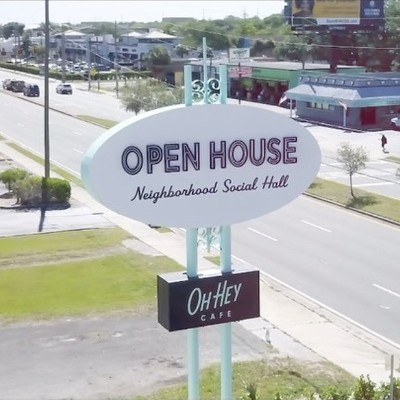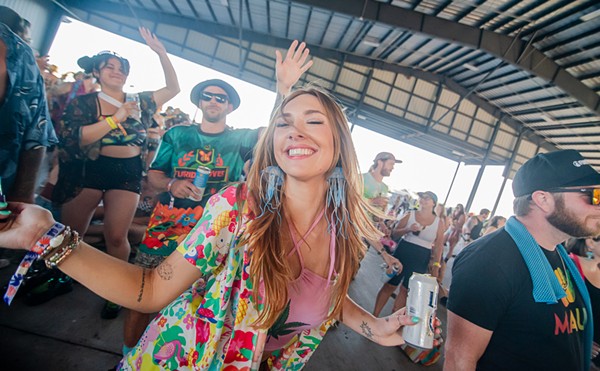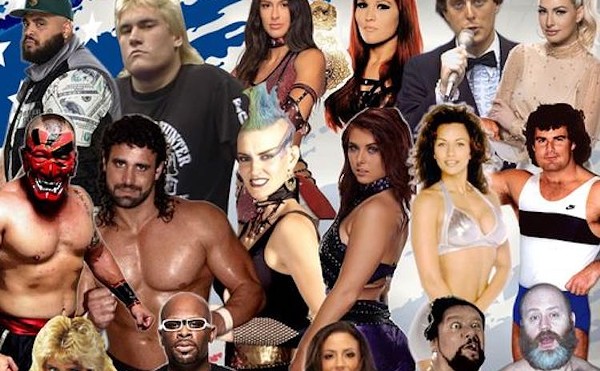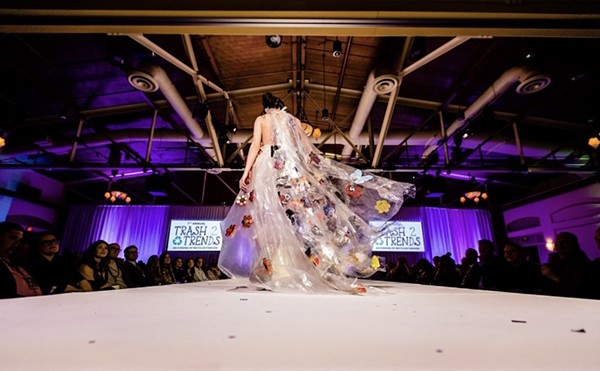Artist Kerry James Marshall's interest in the struggle for racial equality stems from one of the worst civil uprisings in American history. Marshall, a professor at the University of Illinois, moved with his family to California in the mid-'60s. They settled in the tinderbox atmosphere of Watts, where the 10-year-old Marshall would be profoundly affected by the sight of a Jack-in-the-Box clown burning in a parking lot during the 1965 riots.
Marshall earned a degree from the Otis Art Institute in Los Angeles in 1978, and his work has remained inspired by his childhood experience with the explosive consequences of racism, his interest in social behavior and his predilection for beauty. His early works, which won him acclaim in the United States and Europe, were solemn tributes to the icons and ideologies of the civil-rights movement via large-scale historical paintings, photographs, videos and sculptures. His latest endeavors, currently on view at the Orlando Museum of Art, concern the African-American experience in the era after the death of Martin Luther King Jr.
The exhibit's images center around the neighborhoods of Chicago. The bookend acrylic paintings that dominate the exhibit, "Better Homes Better Gardens" and "Untitled (Altgeld Gardens)," are part of a series called "The Garden Project," which parodies the living conditions of subsidized housing. In "Better Homes," an African-American couple walks through a shabby courtyard flanked by crumbling apartments, their faces blank stares. The courtyard's dying trees and weeds partially obscure a sign in the lower-left corner that announces, "Drive Carefully ... and watch your children." Mixed into this depressing milieu are surreal, sarcastic symbols of hope: Four blue songbirds hover overhead, and a beaming sun crests the roof of one building.
"Altgeld Gardens" draws on similar themes. A young black man eats fast-food under a tree as brick tenements loom in the background. To the left a yellow pie graph, with sections marked "AFDC" and "Other," suggests the specter of welfare. As with the other couple, the man's skin is darker than any actual skin color, creating an effect, Marshall has said, that jars viewers out of their expectations.
Marshall undercuts the realism in both paintings with huge splotches of randomly applied paint, graffiti that drips down the canvas and purposely crude renderings that seem to echo the violence and chaos of much inner-city life.
"Theoretical Videos" is a series of Polaroid shots of a television set playing a video that Marshall taped near a Chicago building. Many of the blurry, grainy photos ooze with a creepy voyeurism. The characters on the street corners and front porches in these pictures offer no context, narrative or framework for their randomness. Prostitutes roam the streets looking for johns, a kid wearing a baseball hat trails two women and their little boy, and two people smoke what appears to be a crack pipe.
The exhibit's largest piece is a 50-foot untitled mural of six African-Americans gathered in conversation after a meal. Marshall has said that this work shows blacks in a domestic setting because they're so often depicted as "threatening, somehow violent, somehow irresponsible, somehow nihilistic and alienated." This statement is odd, given the surrounding images of decay and alienation, but it explains this particular piece's purposeful banality.
Although at times very moving, the exhibit in the end has an unfinished feel, as Marshall makes his way along a post-'60s landscape devoid of obvious icons. One wonders where Marshall will turn next for inspiration if he doesn't get another burning clown.















